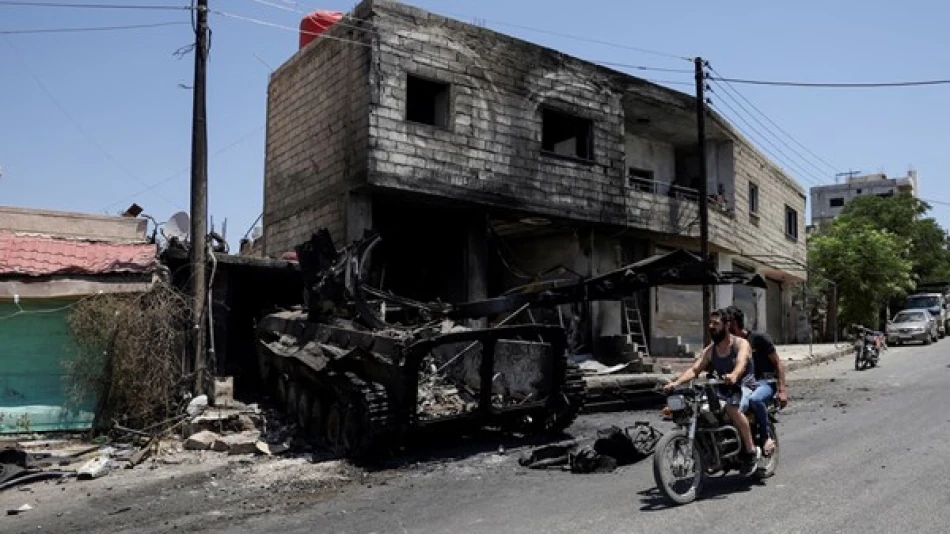
Deadly Clashes Erupt Again in Sweida, Southern Syria, Leaving Two Fatalities
Syria's Sweida Province Sees First Deadly Clashes Since Fragile Ceasefire
Two people have been killed in renewed violence in Syria's southern Sweida province, marking the first fatal breach of a ceasefire that had held for just two weeks. The incident underscores the persistent instability plaguing the Druze-majority region, where tribal tensions and local militias continue to challenge Damascus's authority despite broader efforts to consolidate control across Syria.
Ceasefire Crumbles After Brief Respite
The Syrian Observatory for Human Rights confirmed that two individuals died in clashes in the province's western countryside, including one member of the General Security forces. According to Syria's official news agency, local groups violated the ceasefire agreement by launching attacks on several villages in the western rural areas of the province.
The violence represents the first significant breakdown of the July 20 ceasefire, which had temporarily ended fierce confrontations between tribal fighters and local armed groups. Those earlier clashes had claimed over 1,400 lives, making them among the deadliest internal conflicts in Syria since the height of the civil war.
Sweida's Strategic Significance
Sweida province holds particular importance for the Assad government as it seeks to project stability across Syria. The region is home to the country's Druze minority, a community that has historically maintained a complex relationship with Damascus—neither fully supporting nor openly opposing the government during the civil war.
The province's location near the Jordanian border also makes it a crucial buffer zone for controlling smuggling routes and preventing the infiltration of opposition forces. Any sustained violence here threatens the government's narrative of having restored order to most of Syrian territory.
Pattern of Fragile Truces
The brief duration of this ceasefire reflects a broader pattern across post-conflict Syria, where local agreements often prove temporary solutions to deeper structural problems. Similar dynamics have played out in other regions, including Daraa province, where reconciliation deals have repeatedly collapsed amid ongoing tensions between former rebels, government forces, and local communities.
The involvement of tribal fighters in these clashes highlights how traditional power structures continue to operate alongside—and sometimes in opposition to—state authority. This dual governance system has become a defining feature of Syria's current landscape, where the central government's writ remains contested in many areas despite military victories.
Implications for Regional Stability
The renewed violence in Sweida could signal broader challenges for Syria's stabilization efforts. With limited resources to address underlying grievances and economic hardships, the government increasingly relies on temporary ceasefires rather than comprehensive solutions to manage local conflicts.
For neighboring countries, particularly Jordan, the instability in Sweida raises concerns about border security and potential spillover effects. The breakdown of local truces could also complicate international efforts to facilitate refugee returns and reconstruction aid, as donors typically require demonstrable security improvements before committing significant resources.
 Layla Al Mansoori
Layla Al Mansoori







